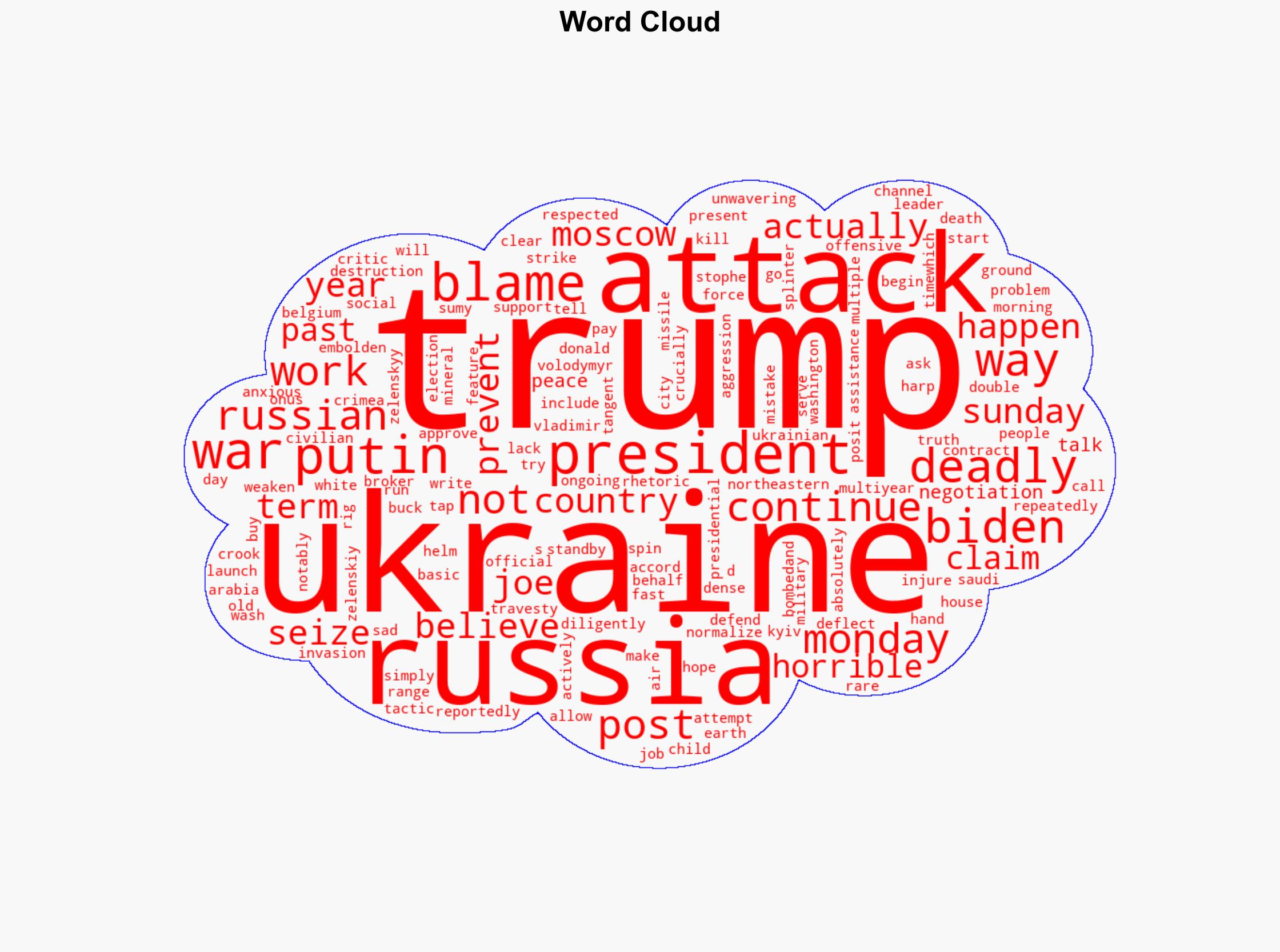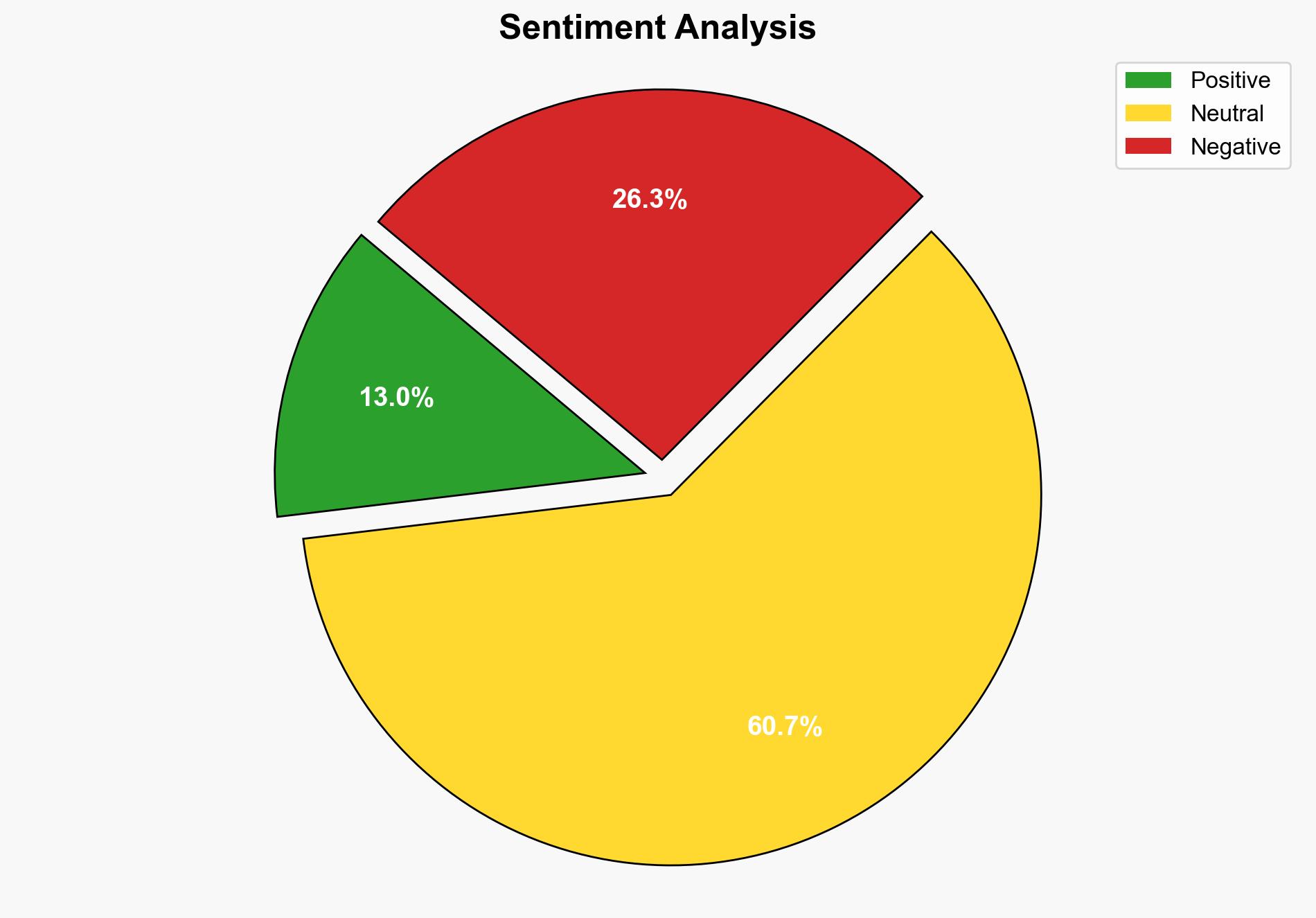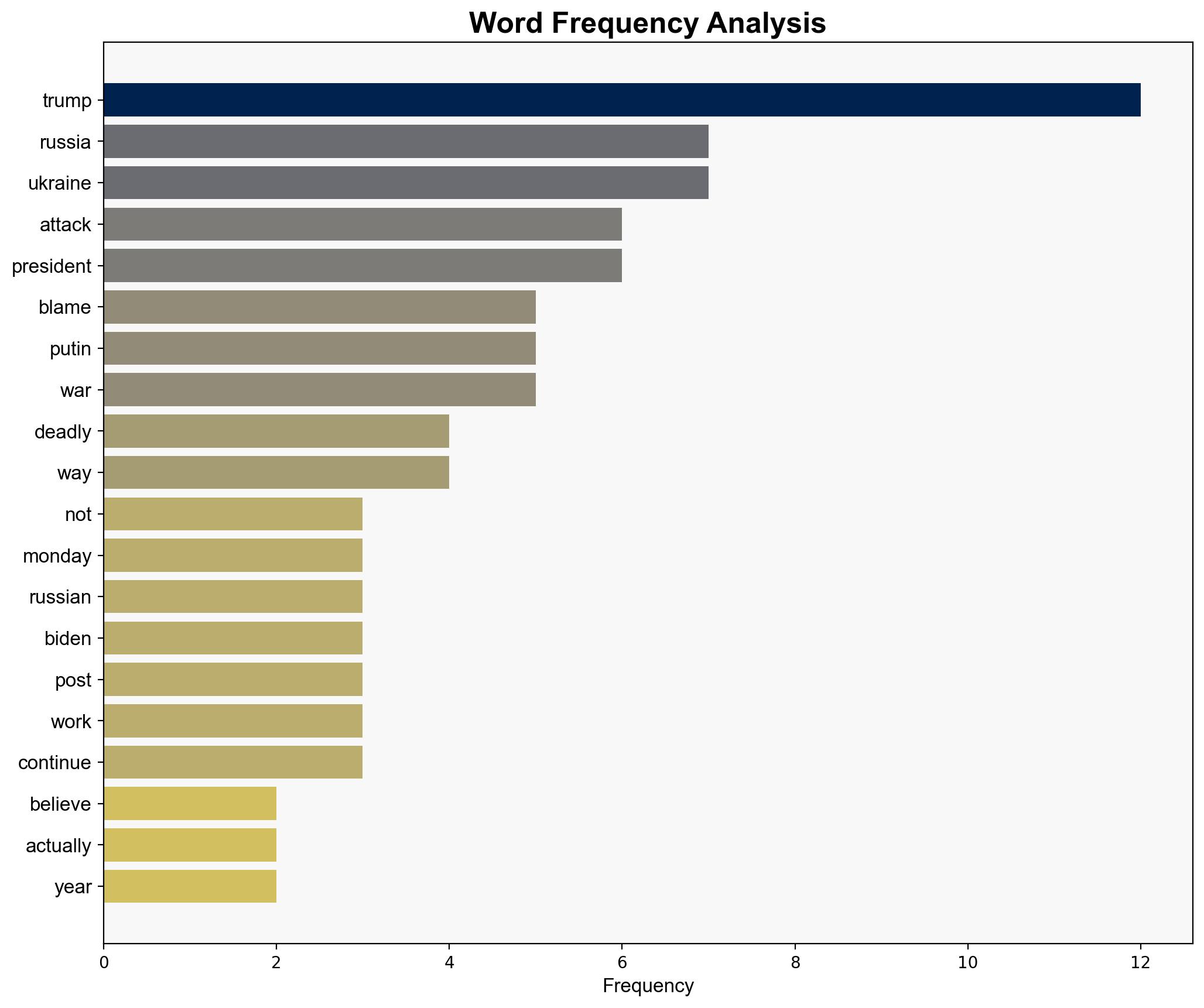You Wont Believe Who Trump Blames for Russia Attacking Ukraine – The New Republic
Published on: 2025-04-14
Intelligence Report: You Wont Believe Who Trump Blames for Russia Attacking Ukraine – The New Republic
1. BLUF (Bottom Line Up Front)
The recent statements by Donald Trump regarding the ongoing conflict between Russia and Ukraine highlight a strategic attempt to deflect blame and influence public perception. By attributing responsibility to the leaders of Ukraine and the United States, Trump seeks to distance himself from the conflict while simultaneously undermining current diplomatic efforts. This rhetoric could potentially normalize Russian aggression and complicate international relations.
2. Detailed Analysis
The following structured analytic techniques have been applied for this analysis:
General Analysis
Donald Trump’s comments following the missile strike in Sumy, Ukraine, illustrate a pattern of rhetoric aimed at shifting blame away from Russia and himself. By framing the conflict as a result of the 2020 U.S. Presidential Election and the actions of Joe Biden and Volodymyr Zelenskiy, Trump attempts to rewrite the narrative surrounding the war. This approach not only seeks to absolve him of responsibility but also serves to erode the legitimacy of current U.S. and Ukrainian leadership. The absence of Vladimir Putin’s name in Trump’s statements suggests a continued reluctance to criticize Russian actions directly, which may embolden further aggression.
3. Implications and Strategic Risks
Trump’s rhetoric poses several strategic risks, including:
- Undermining U.S. diplomatic efforts and alliances, particularly with Ukraine and NATO partners.
- Potentially emboldening Russian aggression by normalizing their actions and reducing international pressure.
- Complicating negotiations and peace efforts by introducing alternative narratives and distractions.
- Impacting U.S. domestic politics by reigniting debates over election legitimacy and foreign policy.
4. Recommendations and Outlook
Recommendations:
- Strengthen diplomatic channels with Ukraine and European allies to present a unified front against Russian aggression.
- Enhance public communication strategies to counter misinformation and clarify U.S. foreign policy objectives.
- Consider regulatory measures to address the spread of misleading narratives that could impact national security.
Outlook:
Best-case scenario: Increased diplomatic efforts lead to a de-escalation of tensions and a renewed focus on peace negotiations.
Worst-case scenario: Continued rhetoric and misinformation exacerbate tensions, leading to further conflict and instability in the region.
Most likely outcome: Ongoing diplomatic challenges with intermittent progress in negotiations, influenced by external narratives and geopolitical interests.
5. Key Individuals and Entities
The report mentions significant individuals and organizations, including Donald Trump, Vladimir Putin, Joe Biden, and Volodymyr Zelenskiy. These figures play crucial roles in the unfolding geopolitical dynamics and are central to the analysis of the current situation.





